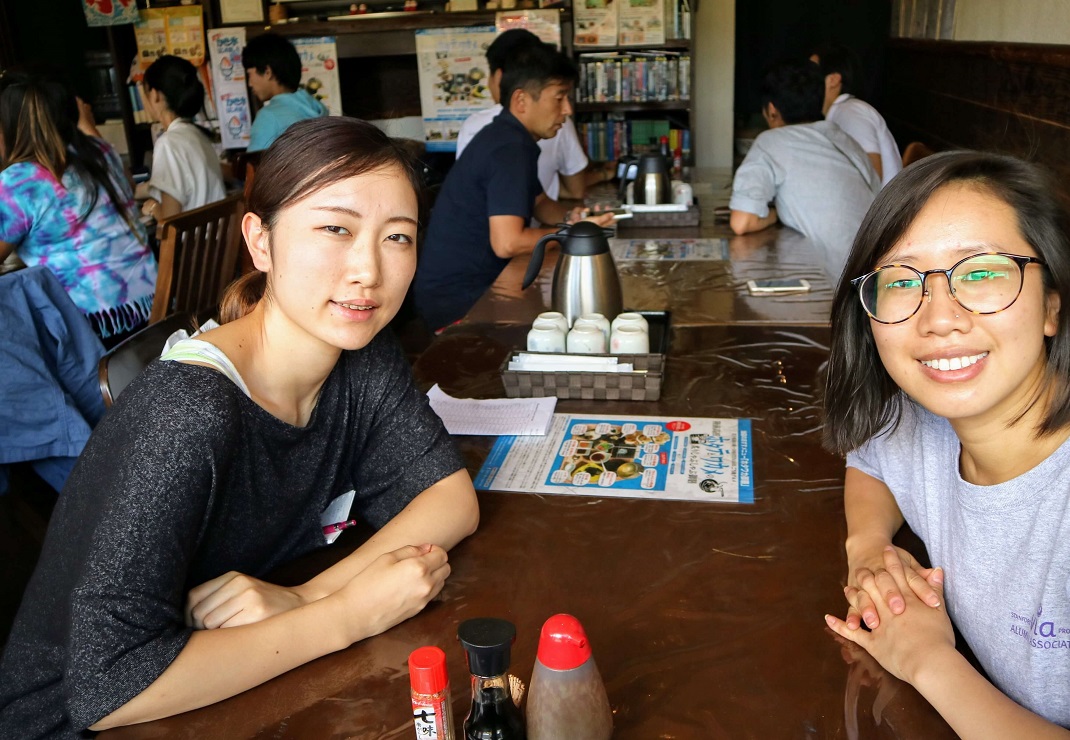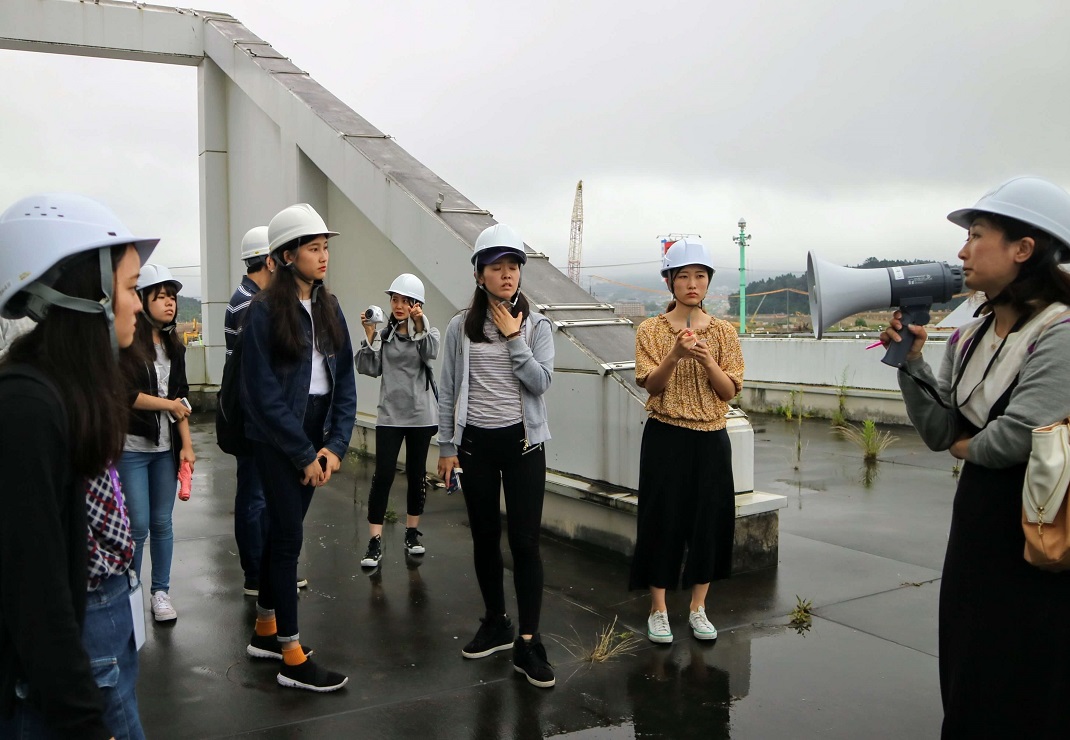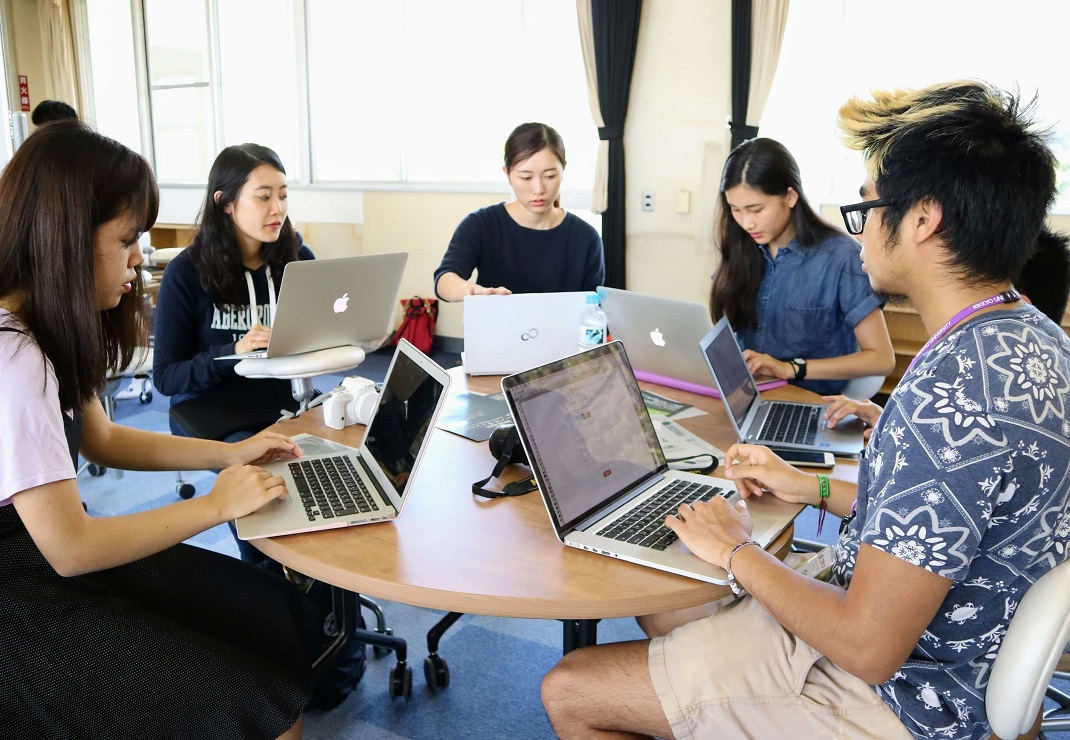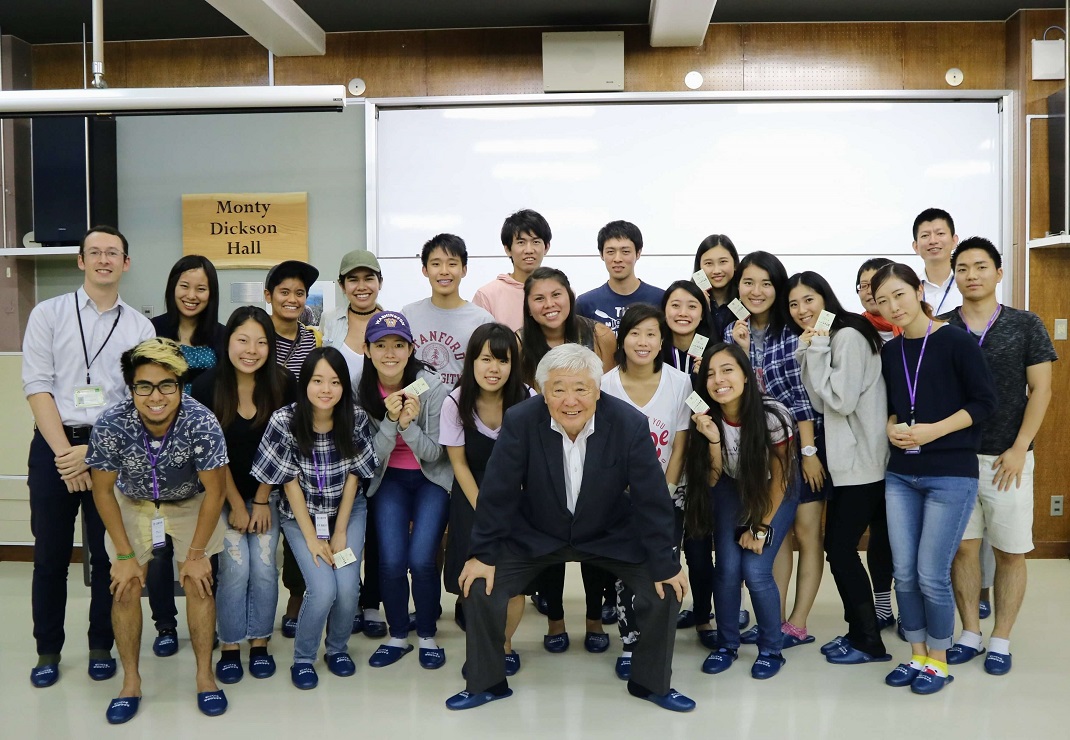Students from Stanford University and Rikkyo University distill the charm of an area that has been affected by disaster to create content and transmit it to the world
Nov 09, 2017
OVERVIEW
The Rikuzentakata Project is a regular curriculum subject conducted in English. The theme of the students’ work: to distill the charm of Rikuzentakata, create content, and transmit it to the world.

Hikari Wada (left) taking part in fieldwork.
The Rikuzentakata Project is a project-based learning (PBL) program in which students carry out fieldwork (over five days, staying four nights) in Rikuzentakata, Iwate Prefecture, a disaster site of the Great East Japan Earthquake, and share in the current status and challenges of the city to create content that conveys the city’s charm to the world. In the 2017 project, 11 students from Rikkyo University were joined by seven students from Stanford University, which has been participating jointly in the program continuously since the 2015 project. Here, they worked together on a project to “distill the charm of Rikuzentakata, create content and transmit it to the world.”
At the fieldwork session taking place from September 7 (Thurs) to September 11 (Mon), the students from both universities formed three teams, and presented their creations to the mayor and the people of Rikuzentakata. A final report was given at the meeting to report results, which was held on September 12 (Tues) at Rikkyo University.
We talked to Rikkyo student Hikari Wada (2nd year, Department of Politics, College of Law and Politics) about the program.
At the fieldwork session taking place from September 7 (Thurs) to September 11 (Mon), the students from both universities formed three teams, and presented their creations to the mayor and the people of Rikuzentakata. A final report was given at the meeting to report results, which was held on September 12 (Tues) at Rikkyo University.
We talked to Rikkyo student Hikari Wada (2nd year, Department of Politics, College of Law and Politics) about the program.
Tell us about how you came to participate in the program.

I heard about the Rikuzentakata Project in my first year. I’d never been to a disaster site, and while I wanted to see the recovery for myself, I’d already decided to join another workshop overseas, so I didn’t take part that year. But while I was on that workshop, participants from other Asian countries asked me about how people in Japan were getting by after the disaster, and I became painfully aware that I didn’t know anything about the disaster site either, outside of what I knew from the internet or TV. From then on, I had a stronger sense that I wanted to see and feel things for myself, that I wanted to meet and talk with the people who live there. So this time, I took part in the program, and I always kept those thoughts in mind.
Tell us about what your activities were like.

Our major goal this time was to “transmit the idea of Rikuzentakata as a tourist destination to the people of the world.” We had three ways of communicating this, video, audio, and print, and we split into groups to handle each of these. After participating in preliminary workshops to learn about Rikuzentakata and listen to people who work on its recovery, we went to the city itself. There, we visited cafes, restaurants, and shopping malls, had interviews with people who live and work there, and then the groups put our findings together into formats we could transmit.
I met people with all kinds of experiences of living in Rikuzentakata, like people who had been living there for a long time, people who moved there before the disaster and stayed, and people who returned after the disaster, but one thing that really stands out from then is when someone told me “I haven't been living here as long as I did in the place where I came from originally, but Rikuzentakata feels like my hometown to me.” I really felt that Rikuzentakata is a place where people have profound connections with each other.
I met people with all kinds of experiences of living in Rikuzentakata, like people who had been living there for a long time, people who moved there before the disaster and stayed, and people who returned after the disaster, but one thing that really stands out from then is when someone told me “I haven't been living here as long as I did in the place where I came from originally, but Rikuzentakata feels like my hometown to me.” I really felt that Rikuzentakata is a place where people have profound connections with each other.
What feelings do you have about the program?
The people of Rikuzentakata told us that through the disaster, they started being active about accepting opinions from outside. In the five days that we spent there, all the people that we met warmly welcomed us in. I think that perhaps it’s that warmth that’s a major part of Rikuzentakata’s charm. While it has natural beauty with the sea, mountains, and rivers, and the food is great, I really felt that the number one source of energy behind Rikuzentakata’s recovery is in that strong feeling of wanting to make Rikuzentakata better, treasuring the connections between people.
I think it was easy for me to forget about treasuring those bonds in my day-to-day life. But the people of Rikuzentakata taught me that always acting with a sense of gratitude has a huge influence on your relationships with others and the community as a whole. I also saw and learned for myself that the people of Rikuzentakata are pushing the recovery forward with their own actions, but to get back to the way they lived before looks like it will still take time. I want to keep telling people about the knowledge and feelings I drew from my experiences there, so that more people can learn about Rikuzentakata’s charm, so that more people will come to visit, and so that Rikuzentakata can become an even more vibrant community.

At the Rikuzentakata Global Campus, Monty Dickson Hall. (With alumnus Kazuyoshi Kono, chairman of Yagisawa Shoten.)
* This program was started in the 2013 academic year as a pilot program, as part of our Rikkyo Global 24 activities, with the goal of having Rikkyo University students (including international students) contribute to supporting the recovery of Rikuzentakata by acquiring a broad understanding of the current state of the disaster site and sharing in issues surrounding the recovery. Stanford University endorsed the aims of the program, and asked to send students of its own. Since the 2015 project, Stanford students have been participating every year through VIA (Volunteers in Asia), a Stanford University NPO.
Note: This article is accurate as of the time of reporting.
Note: This article is accurate as of the time of reporting.
RECENT TOPICS
Oct 17, 2025
MSDA Rikuzentakata Field Trip 2025
Master of Social Development and Administration (MSDA) Course